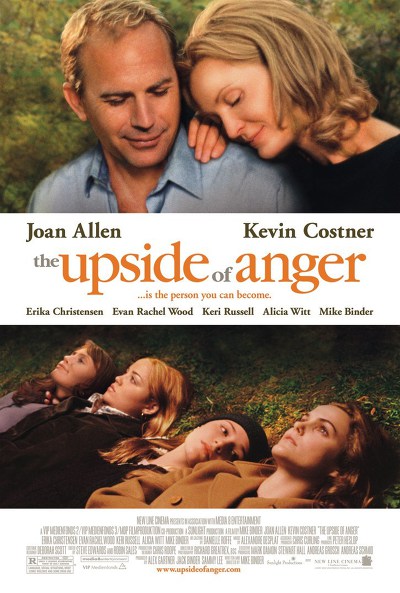Overview of Film Tax Credits and Film Tax Incentives
Film tax credits and film tax incentives explained, description of types, how to monetize them, and benefits to local economies. Major Hollywood Studio Producer Jack Binder outlines film tax credit details.
Film tax credits and film tax incentives (also known as Production Incentives) are widely used film finance source for filmmakers, production companies, major studios, and independent films worldwide. Forming a portion of film financing for productions, the net benefit can range from 15% to up to 55% of eligible expenditure locally.
National and local government bodies have understood that providing film and television support for a television or film budget for media productions encourages inbound investment into local economies.
List of U.S. Film Tax Credits
Below is a list of U.S. film tax credits by State with the incentive percentage (rate), type (rebate or transferable), and details (potential uplifts, etc.), and annual cap permitted by legislation.
| State | Rate | Type | Details | Annual Cap |
|---|---|---|---|---|
| Alabama | 25% | Rebate | Additional 5% for local hires | $20 million |
| Alaska | No active program | N/A | Program suspended | N/A |
| Arizona | 15–20% | Rebate | Additional 2.5% for select counties | $75 million |
| Arkansas | 20% | Rebate | Additional 10% for resident cast/crew | No cap |
| California | 20–25% | Rebate | Additional 5% for filming outside major cities | $330 million |
| Colorado | 20% | Rebate | Requires 50% local workforce | $45 million |
| Connecticut | 30% | Transferable | Minimum spend requirement | No cap |
| Delaware | No active program | N/A | No film tax incentives | N/A |
| Florida | No active program | N/A | Program expired in 2016 | N/A |
| Georgia | 20% | Transferable | Additional 10% for using state logo | No cap |
| Hawaii | 20–25% | Rebate | Additional 5% for filming on neighbor islands | $50 million |
| Idaho | No active program | N/A | No film tax incentives | N/A |
| Illinois | 30% | Transferable | Additional 15% for disadvantaged areas | No cap |
| Indiana | 30–35% | Rebate | Increased rate for local production spending | $25 million |
| Iowa | 15% | Rebate | Encourages local production spending | $10 million |
| Kansas | No active program | N/A | No film tax incentives | N/A |
| Kentucky | 30% | Transferable | Incentive for rural productions | $15 million |
| Louisiana | 40% | Transferable | Bonus for resident hiring; widely used | $300 million |
| Maine | 20% | Rebate | Incentive for on-location filming | $10 million |
| Maryland | 25% | Transferable | Encourages digital effects & post-production | $50 million |
| Massachusetts | 25% | Transferable | Additional bonus for local hires | $60 million |
| Michigan | No active program | N/A | Previously suspended | N/A |
| Minnesota | 20% | Rebate | Incentive for regional productions | $15 million |
| Mississippi | 20% | Rebate | Bonus for local filming | $20 million |
| Missouri | 25% | Rebate | Incentive for production in rural areas | $30 million |
| Montana | No active program | N/A | No film tax incentives | N/A |
| Nebraska | No active program | N/A | No film tax incentives | N/A |
| Nevada | 20% | Rebate | Bonus for filming outside major casinos | $25 million |
| New Hampshire | No active program | N/A | No film tax incentives | N/A |
| New Jersey | 30% | Transferable | Incentive for on-location & studio filming | $100 million |
| New Mexico | 25–30% | Transferable | Multiple bonus incentives available | $140 million |
| New York | 30% | Transferable | Additional incentive for filming outside NYC | $350 million |
| North Carolina | No active program | N/A | Program expired | N/A |
| North Dakota | No active program | N/A | No film tax incentives | N/A |
| Ohio | No active program | N/A | Program suspended | N/A |
| Oklahoma | 30% | Transferable | Encourages local production spending | $20 million |
| Oregon | 20% | Rebate | Bonus for post-production work | $30 million |
| Pennsylvania | 25–30% | Transferable | Bonus for filming outside metro areas | $150 million |
| Rhode Island | No active program | N/A | Limited/no incentives | N/A |
| South Carolina | 25% | Rebate | Additional 5% for local hiring | $20 million |
| South Dakota | No active program | N/A | No film tax incentives | N/A |
| Tennessee | 30% | Transferable | Incentive for both rural & urban filming | $35 million |
| Texas | 20–25% | Rebate | Bonus for designated filming zones | $150 million |
| Utah | 25% | Rebate | Bonus for mountain region filming | $25 million |
| Vermont | No active program | N/A | No film tax incentives | N/A |
| Virginia | 20–25% | Transferable | Incentive for regional productions | $50 million |
| Washington | 20% | Rebate | Bonus for high-tech productions | $30 million |
| West Virginia | No active program | N/A | No film tax incentives | N/A |
| Wisconsin | 30% | Transferable | Bonus for hiring local talent | $40 million |
| Wyoming | No active program | N/A | No film tax incentives | N/A |
Film tax incentives programs change constantly. For the most precise and up-to-date information, it’s always best to check the official state film commission sites before making location decisions.
Contact FilmBudget.com Founder Producer Jack Binder for an analysis, calculation, and estimation of film tax credits finance amounts and which U.S. States may be most suitable for your production.
List of UK and Europe Film Tax Credits and Film Tax Incentives
UK and European film tax credits list with additional details. Rebate, refundable, transferable, grants for incentives listed with current rates. Western and Eastern Europe locations including the United Kingdom.
| Country | Rate | Type | Details |
|---|---|---|---|
| United Kingdom | 34% (25.5% net) | Tax Credit | 80% of UK spend eligible. 39% VFX uplift starts 2025. |
| Germany | 20–25% | Grant | Supports German-based spend and labor costs. |
| France | 30% | Tax Rebate | Higher rates for animation, VFX, and international shoots. |
| Hungary | 30% | Tax Credit | No cap. 25% of eligible spend may be non-local. |
| Czech Republic | 20–35% | Cash Rebate | Rising to 35% for some costs from 2025. |
| Italy | Up to 40% | Tax Credit | €18M project cap. Co-production or local spend needed. |
| Ireland | 32% | Cash Rebate | On Irish spend. Cultural test applies. |
| Belgium | Up to 45% | Tax Shelter | Investor-based system. Belgian partner required. |
| Poland | 30% | Cash Rebate | Min. spend and cultural test required. |
| Lithuania | 30% | Tax Incentive | Min. €43K spend. Open to foreign productions. |
| Slovakia | 33% | Cash Rebate | Requires local services and minimum budget threshold. |
| Romania | Up to 35% | Cash Rebate | Program reactivated for 2025. Subject to budget cap. |
| Croatia | 25–30% | Cash Rebate | Bonus 5% for filming in underdeveloped areas. |
| Serbia | 25–30% | Cash Rebate | Cultural test and rural uplift available. |
| Cyprus | Up to 45% | Cash Rebate | Available for features, TV, and post/VFX work. |
Always double-check with the country Film Commission for latests rates, rules, and changes.
Types of Film Tax Credits: Rebates, Refundable, Transferable
The three main types of film tax credits are refundable, rebate, and transferable
Refundable Film Tax Credits (Rebates)
Refundable and Rebate film tax credits are similar in that they both entail a cash outlay from the governing body to the production. A refundable incentive is an allowance toward taxes which may be owed by a production in the jurisdiction, for which the excess over what is owed is returned to the entity responsible for making the film or tv show.
A Rebate Film Tax Credit is similar to a Refundable one, in that it is a cash outlay to the production. The governing entity literally writes a check to the production company responsible for the expenditures.
Transferable Film Tax Credits
A Transferable Film Tax Credit takes a different approach as it is a true credit which is transferred to an entity owing taxes as a way to reduce their own net outlay. This takes the form of a company with a large tax bill, which acquires tax credits at a discount, with the difference in the amount of the credit to what they paid for it as a savings to the company.
Transferable tax credits must be sold to a company via a film tax credit broker, who arranges and connects the buyer and the seller. The tax credit is reduced in this process by as much as 4%-11%, yielding a net to the production of 89%-96% of the film tax incentive net benefit.
Contact Producer Jack Binder to discuss your production with a free consultation.
Consider the Type of Film Tax Credit, Percentage, Annual Cap
The above factors must be considered when analyzing locations and film tax credits, with the understanding on what the actual return will be. Most locations now require an audit by a third party, and a CPA can help with this and often arrange connection with a broker.
The Benefit to Film and TV Production and Local Economies
Offering film tax credits and production incentives has created a win-win situation for entertainment production and participating jurisdictions’ economic benefit. Large sums of money flow into the local economy, while film and television production finance shortfalls in funding are assisted by federal, state and local treasuries.
Film and television production is encouraged, supported, and welcomed with the establishment of film commissions dedicated to luring production to their area. Billions of dollars of inward investment and expenditure is deployed into the communities in which the incentives are utilized.
Federal, State, and Local Government subsidies in the form of tax credits help productions fill gaps in funding, ensuring a stable and reliable (more on this below) source of finance as a percentage of a project’s film or tv budget. The average film tax credits percentage is about 20-30% of a project budget.
Film Tax Credit and Film Tax Incentives Updates
New York Increases Film Tax Credits for Indie Film
New York has created a new program to invest $100 million for indie films. Additionally they have increased funding for big budget movies over $100m as well as those above $20m. The program takes affect in the new state budget effective April 1, 2025. Full details here.
Czech Republic Increases Refundable Tax Credit Amount and Per Project Cap
Czech Republic announced an increase in its refundable film tax credit program from 20-25% on December 11, 2024 effective January 1, 2025. Additionally the government tripled the per project cap to €18m from €6m. Documentaries with a minimum runtime of 70 minutes qualify and documentary series will be eligible for the 25% incentive in 2026. Read the article here.
Denmark Announces Film and Television Incentives Program
Denmark announced that it will allocate $17m to a new film tax credit and production incentives program for film and television. Country will join other Nordic states expanding their film and tv support offerings.
Hungary Updates and Extends Film Tax Credit Program to 2030
Hungary has extended its reliable film tax credit to 2030, adding additional certainty for film financing to rely upon. Budapest based film tax incentive stands at 30% for film and television series productions.
Recent filmed productions in Hungary include ‘Alien: Romulus’, ‘The Brutalist’, and ‘The Day of the Jackal’.
Australia Film Tax Credit Updated and Increased to 30% for Film and Television
Australia Location Offset increased to 30% for film and television international production filming in Australia. The Location Offset production rebate has been increased from the previous 16.5% level as of July 2024.
The Producers Offset for local Australian productions remains in effect complementing the location film tax incentives programs, with the government demonstrating strong support for the entertainment industry.
U.S. Film Tax Incentives and Co-Production Webinar
Here is a good film tax incentives and co-production webinar featuring industry professionals. How to apply for production incentives, dollars caps, co-productions are all explained and detailed in this informative episode.
State by State Updates to US Production Incentives Programs
Our friends and colleagues at GreenSlate have listed a state by state summary of production incentives programs updates.
For a list of global production incentives mapped with detailed information visit:
https://www.ep.com/production-incentives
For a list of US film tax incentives visit:
https://www.castandcrew.com/services/incentives-map/
https://www.mediaservices.com/blog/state-by-state-production-incentives-roundup-2022/

Economic Impact of Location Film and Television Production
Multiple financial analysis reports from leading accountancy firms (PwC, EY, Deloitte, etc.) on the efficacy of film tax credits demonstrates an economic impact return of between $2.00-$7.00 for every $1.00 spent to encourage inward production. Film and television productions must spend locally to gain an incentive, which results in about 60-70% of a film budget to be spent locally.
Economic areas where the expense is deployed benefits: hotels, motels, airbnb housing, short term rental housing, restaurants, dry cleaning facilities, washing facilities, taxis, uber drivers, construction materials providers, lumbar, hardware stores, clothing suppliers, airports, individual homeowners (site rentals), small businesses of all ranges.
Additionally, inbound production benefits the local crew base of an area, training, elevating, teaching, promoting local film and tv crew members on the movies and tv series that shoot in the area. This benefits both the producers and the crew members, providing invaluable training and experience.
FilmBudget.com Worldwide provides film tax credit and production incentives analysis, calculation, and certification services. Its core service is professional film budget and schedule, film finance plans, and producer consulting services utilizing 30 years of Major Hollywood Studio and indie film producing experience by its founder, Producer Jack Binder (First Reformed, The Upside of Anger). For a list of our credits visit: www.FilmBudget.com/about – Get in touch for a complimentary consultation on your project via: www.FilmBudget.com/contact
We look forward to assisting you with you production and film finance requirements. For an analysis of your film tax credit amount get in touch for a complimentary consultation on your project!





